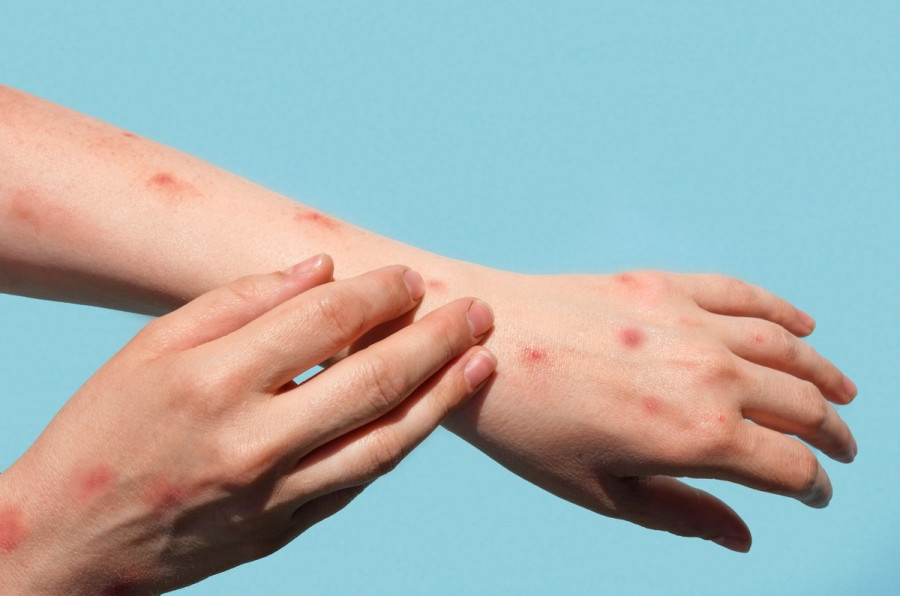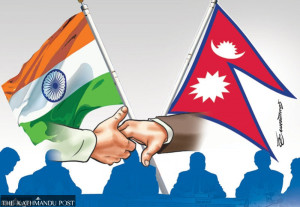Columns
Imported mpox in Nepal
The recent cases of the virus among Saudi returnees should be a wake-up call for us.
Dr Sher Bahadur Pun
On August 14, 2024, the World Health Organisation (WHO) declared monkeypox (mpox) a public health emergency of international concern (PHEIC) following an unexpected surge of mpox infections in the Democratic Republic of the Congo (DRC) and due to its potential for broader transmission. This is the second declaration of mpox as a PHEIC within two years. In July 2022, mpox was first declared a PHEIC due to its rapid spread beyond Africa.
Two Saudi returnees have been confirmed to be the first cases of mpox in Nepal. This confirmation prompts a discussion regarding the potential spread of this virus within our community. In June last year, a foreign national was also confirmed with mpox.
The term monkeypox was introduced in 1958, following the observation of a “pox-like” illness in research monkeys in Denmark. Mpox is caused by the monkeypox virus, which is related to the species of the genus Orthopoxvirus. There are two distinct clades of virus: Clade I, subdivided into Ia and Ib, and Clade II, further divided into IIa and IIb. In 2022-2023, a global outbreak of mpox was attributed to the clade IIb strain, while the clade Ib strain was responsible for the mpox outbreak in 2024. However, no information is available about the clade of mpox in the two Nepali patients and the foreign national.
Signs and symptoms usually begin one to 21 days after the exposure and typically last for two to four weeks. Common symptoms include fever, sore throat, body ache, swollen lymph nodes, weakness and rash. The rash usually begins on the face and spreads to other body parts, including the palms and the soles. Lesions may even appear in the mouth, throat, anus and genital areas. The rash initially emerges as a flat sore and subsequently evolves into a blister containing liquid that may cause itching or pain. During the healing phase, the lesions dry out, crust over and ultimately slough off. In other words, the nature of the skin lesions (phases of the lesions) of mpox are almost the same as those of Chickenpox.
Mpox remains contagious until all lesions completely heal and a new layer of skin develops. Elderly, children, those with compromised immune systems and pregnant women are vulnerable to experiencing complications that may lead to severe health outcomes, including mortality. As per the available data, the death rate for those affected by mpox is estimated to be between 0.1 percent and 10 percent. Secondary bacterial infection in the skin, pneumonia, vision loss, infections, encephalitis and meningitis are some of the complications associated with mpox infection.
On December 19, 2024, one of the two Nepali mpox patients, a 36-year-old male, was admitted to Sukraraj Tropical and Infectious Disease Hospital. Subsequently, the second person, a 46-year-old male, was admitted on December 29. Interestingly, there were notable variations in the symptoms and transmission routes among the two Nepalis. For example, patient-A did not develop a high-grade fever (just a feeling of feverishness) compared to patient-B, who suffered a high-grade fever for 3 days. Likewise, in patient-A, the skin lesion was first spotted in the genital area before it spread to other parts of the body. In contrast, the rash began on the feet, followed by its upward extension to the genital area, abdomen, neck and face/head in patient-B. The infection in patient-A was transmitted through sexual contact, while patient-B may have been infected by his Sri Lankan friend (who had recently returned from his country and shared a room with him for almost a week) or individuals residing in the same building.
The symptoms akin to those experienced by these patients were also observed among their colleagues in Saudi Arabia. Patient-A found that some colleagues were suffering from sexually transmitted infections, whereas patient-B observed a high-grade fever among his colleagues (who were living in the same building).
People who have sexually transmitted infection(s) are often subjected to social stigmatisation, discouraging them from undergoing tests for the virus. While the Government of Nepal is sharing some details about mpox, it is imperative to disseminate the message that the virus can also spread through skin-to-skin contact and by the sharing of objects rather than solely through sexual contact.
Thousands of Nepali individuals regularly travel to countries in the Middle East, primarily for employment opportunities. However, they are unaware that infectious diseases are spreading in destination countries. As a result, they are vulnerable to various infectious diseases, which they could potentially bring to Nepal. It is reasonable to assume that the risk of mpox transmission among Nepalis in the Middle East is higher, as they are often compelled to live in shared accommodation. Nevertheless, the potential for mpox to be imported into Nepal is not confined to the Middle East, as the disease experienced a worldwide outbreak in 2022 and 2024.




 17.12°C Kathmandu
17.12°C Kathmandu















